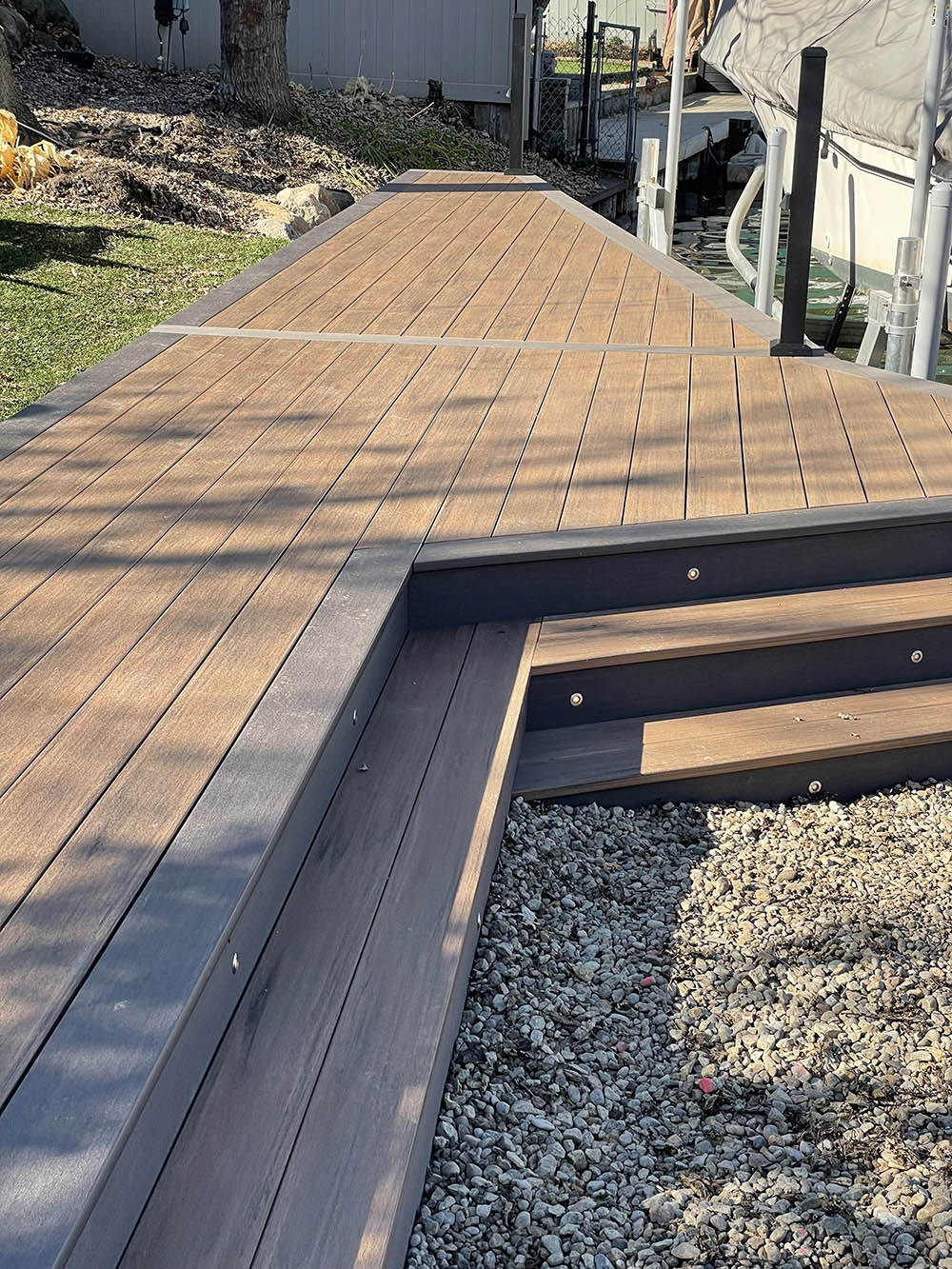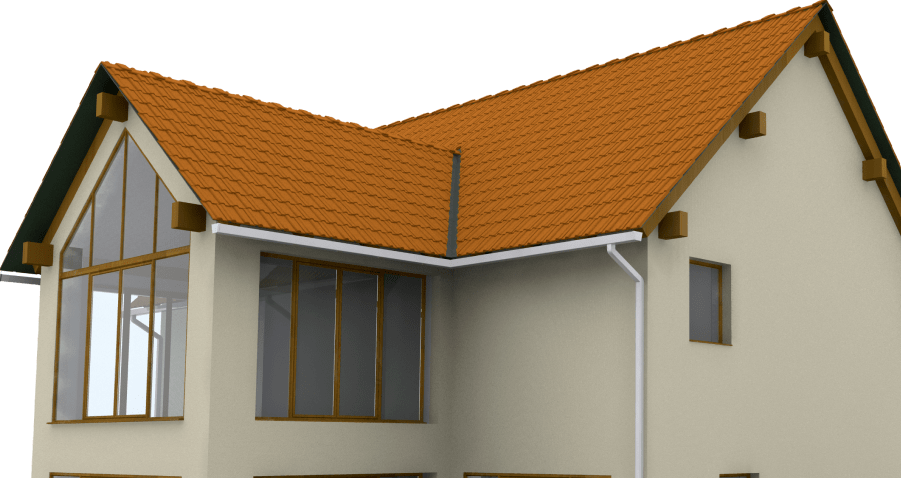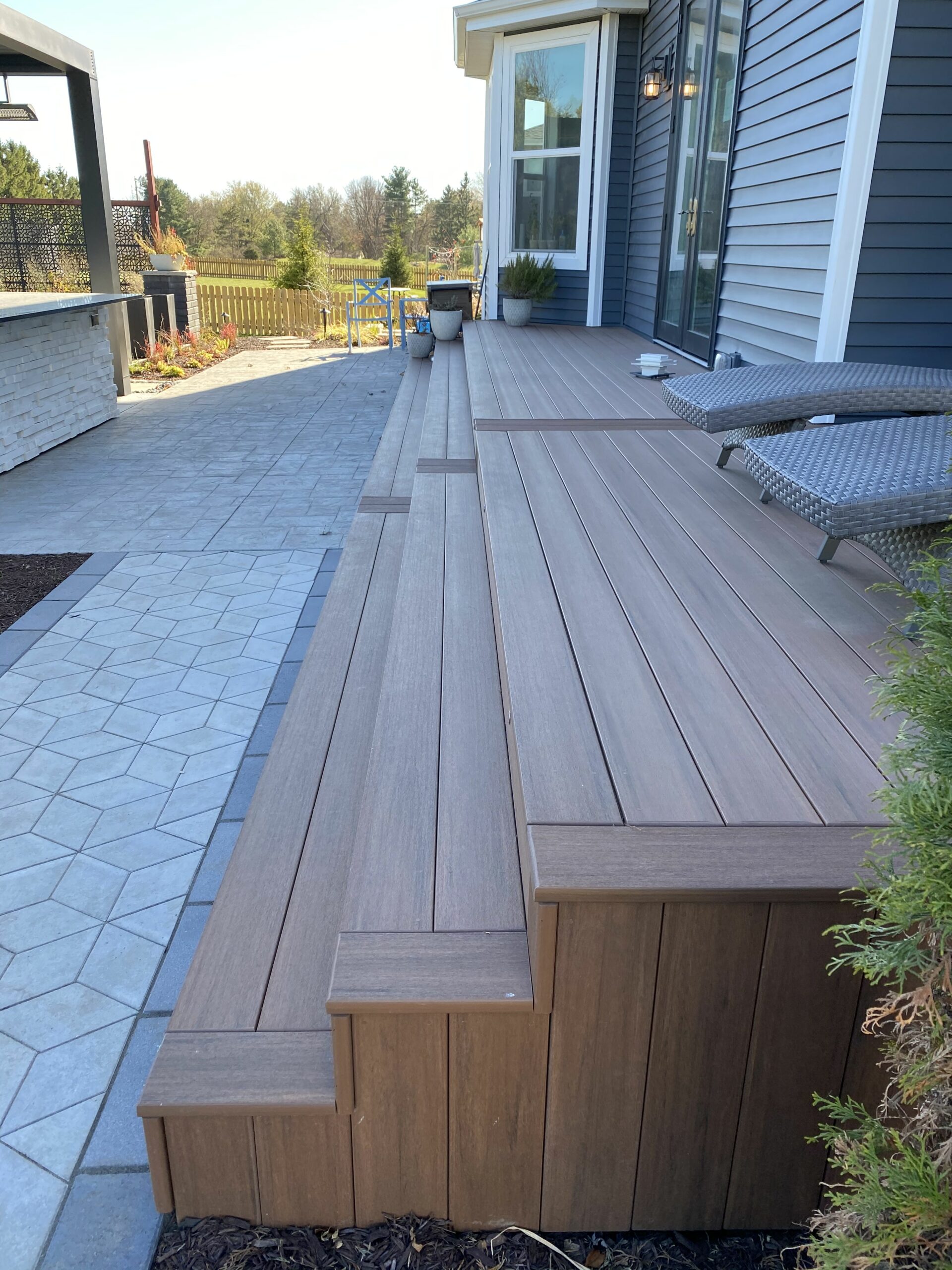
This is where your dream deck meets design experience, quality craftsmanship and dependable service. We understand that investing in a deck is a significant decision, and you deserve to feel confident in your choice.

Enjoy a deck built with high-quality materials and expert craftsmanship, ensuring long-lasting durability and minimal maintenance. Our designs offer superior performance against extreme temperatures, direct sunlight, and inclement weather. With our expertise, you can have a beautiful, resilient deck that stands the test of time.

Your safety and comfort are our top priorities in every deck we design. We use slip-resistant materials and secure railings to create a safe environment for you and your family. It's built with durable materials that enhances functionality and aesthetic appeal of the area. Enjoy peace of mind and a beautiful outdoor space with our expertly crafted decks.

Investing in a DEKTEX deck adds significant value to your home without breaking the bank. We use only the best materials, designed to last for decades and withstand inclement weather. Our competitive pricing ensures you get exceptional value for your money, providing you with a durable, high-quality deck that enhances your home's appeal and functionality.
PROFESSIONAL DECK INSTALLATION SERVICES IN MADISON, WI

Our team of experienced professionals is dedicated to delivering personalized service tailored to your specific needs and preferences. At DEKTEX, we prioritize safety and sustainability, ensuring your deck enhances your outdoor space and stands the test of time. With us, you can expect exceptional craftsmanship, reliable service, and a beautiful, functional deck that adds value to your home.
We know that budget is a top concern for our customers. That’s why we offer a range of https://www.timbertech.com/ options tailored to fit your financial needs without sacrificing quality. We’re committed to transparency, ensuring you understand every aspect of the cost involved.
Choosing a reputable company with a proven track record can make all the difference. With years in the industry, we have honed our skills and built a solid reputation for excellence, bringing time-tested knowledge, reliability and in house trained installers to every project.
We utilize only high-quality, durable https://www.timbertech.com/ materials that stand the test of time. Our products are carefully selected for their performance and aesthetics, ensuring your deck not only looks great but also lasts for years to come with hassle-free warranties to give you confidence in your new deck.
We value your home as much as you do. Our team is dedicated to maintaining a clean and respectful work environment, treating your property with care throughout the building process.











Decks Built

Years of Experience

Satisfied Customers

Backyards Transformed
The timeline for building a deck depends on its size, complexity, and materials. Typically, a deck can take anywhere from one to three weeks to complete, factoring in design, permits, weather conditions, and any customization requests.
Yes, many deck builders offer repair and renovation services. Whether your deck needs structural repairs, refinishing, or updates like adding new railings or extending the deck, professionals can assess and improve your existing structure.
In Madison, common deck materials include pressure-treated wood, cedar, composite decking, and PVC. Pressure-treated wood is a cost-effective option, while composite and PVC materials are popular for their low maintenance and durability in varying weather conditions.
Several factors influence the cost of building a deck, including the size of the deck, the materials used (such as wood, composite, or PVC), labor costs, design complexity, additional features like railings or stairs, and any site preparation needed. The cost may also increase if the project requires custom elements or if the terrain of your property presents challenges.
Yes, in most cases, you will need a permit to build a deck. Local building codes in Madison, as in many cities, require a permit for structures like decks to ensure they meet safety standards. The specifics depend on the size and height of the deck, so it’s essential to check with your local building authority before starting the project.